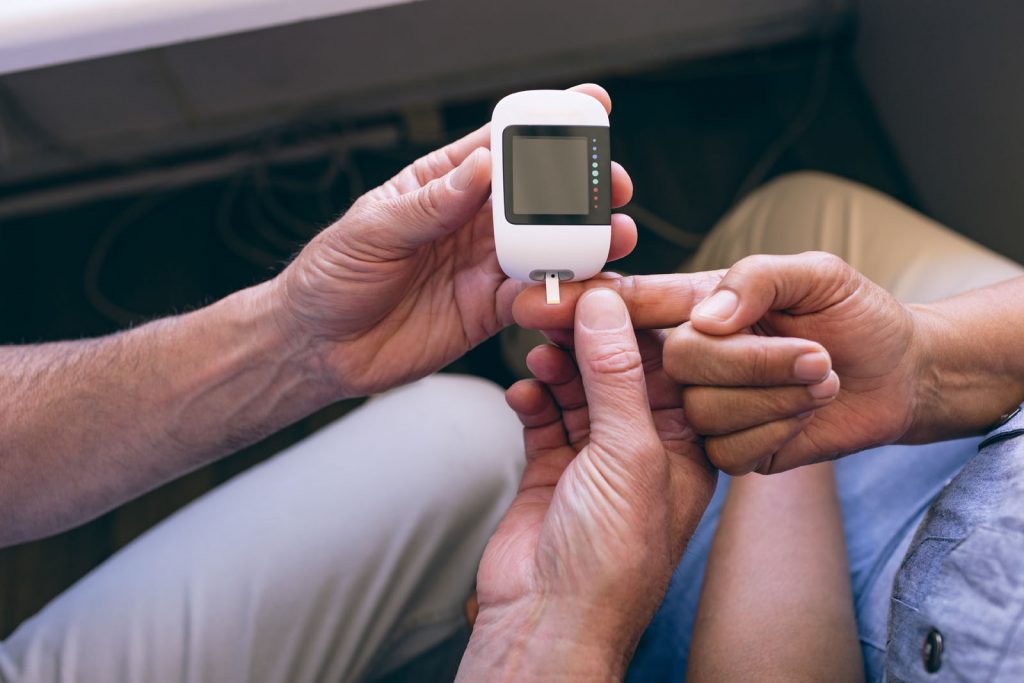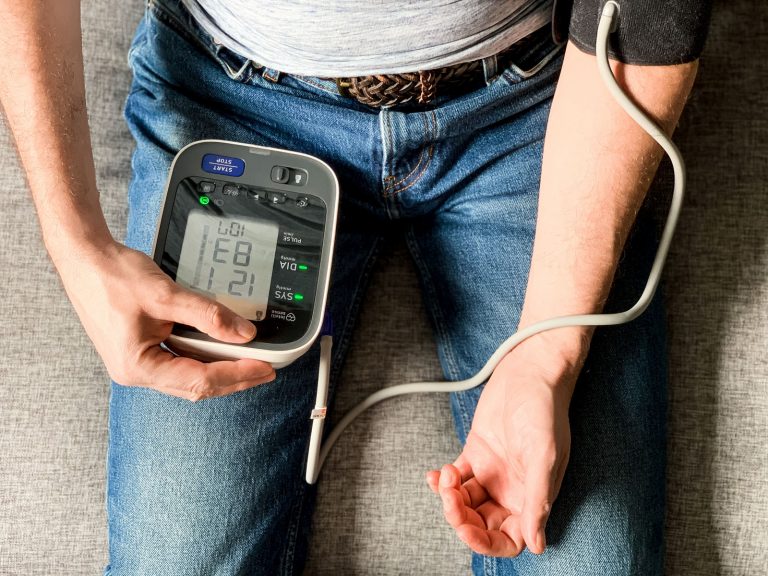Learn how you can reverse prediabetes and reclaim your metabolic health naturally with functional medicine. Take control of your metabolic health to feel younger and live longer!
Take Control: Reversing Prediabetes for a Healthier You

Key Takeaways
- Prediabetes is reversible: With the right lifestyle changes, you can prevent progression to type 2 diabetes.
- Insulin resistance is a root cause: Addressing insulin resistance through diet, exercise, stress management, and sleep optimisation is key.
- Weight management matters: Losing even a small percentage of body fat, especially visceral fat, significantly improves insulin function.
- Diet plays a crucial role: A whole-food, low-glycemic diet supports blood sugar stability and reduces inflammation.
- Functional medicine provides a comprehensive approach: Advanced testing, dietary recommendations, and targeted supplementation can help you optimise glucose metabolism.
Introduction
Prediabetes is a warning sign, not a life sentence. It means your blood sugar levels are elevated but not yet high enough to be classified as type 2 diabetes. While prediabetes often comes with no noticeable symptoms, its consequences can be serious if left unchecked, increasing the risk of diabetes, heart disease, and cognitive decline. The good news? With early intervention and targeted lifestyle changes, prediabetes can often be reversed. By working with a naturopath or functional medicine practitioner, men can take proactive steps to restore metabolic health, improve insulin sensitivity, and prevent type 2 diabetes.
Understanding Prediabetes: The Basics
Prediabetes can be defined as blood sugar levels that are higher than normal- but not yet high enough to be diagnosed as type 2 diabetes. This condition develops when the cells of the body can no longer respond to insulin well, or your pancreas is unable to produce enough insulin. Insulin is a hormone that helps control blood glucose levels. As a result of insufficient insulin production or cellular response to insulin, glucose builds up in the blood.
If pre-diabetes is not managed, it can lead to type 2 diabetes. Long-term elevated blood sugar can also raise the chances of serious health problems, including heart disease, stroke, and Alzheimer’s disease. There are no obvious symptoms of prediabetes, which is why regular checkups and monitoring your blood sugar are super important for picking up any changes early on.
Defining Insulin Resistance, Prediabetes, and Diabetes
As mentioned above, pre-diabetes is when your blood sugar levels are elevated- but not high enough for you to fall in the diabetic category (fasting blood glucose consistently over ≥7.0 mmol/L). Elevated blood sugar can occur because of beta-cell insufficiency. This is the inability of pancreatic beta cells to produce enough insulin to bring blood sugar levels down. This condition is a key factor in the development of type 2 diabetes and is known as insulin insufficiency. Over time, various factors such as genetic predisposition, chronic hyperglycemia, insulin resistance and inflammation can lead to a decline in beta-cell mass and function. This results in insufficient insulin production, which elevates your blood sugar levels. Therapeutic approaches aimed at preserving or restoring beta-cell function are crucial in managing, and potentially preventing, the progression of diabetes.
Insulin resistance can also cause of pre diabetes and type 2 diabetes. In healthy people, insulin helps cells take in glucose from the blood to utilise for energy. When someone has insulin resistance, their cells do not respond well to insulin. This is known as a decline in insulin sensitivity or insulin resistance. As a result, the pancreas has to make more insulin to keep blood glucose levels steady. Over time, making too much insulin can wear out the pancreas and beta cells. This can lower insulin production and lead to blood sugar regulation issues.
How Can I Lower Cholesterol Naturally?
Men are more likely to suffer from coronary heart disease, they are also more likely to develop heart disease earlier in life! This fact emphasises the importance of men managing their cholesterol. Using supplements can support this process, especially when paired with lifestyle changes, including weight loss, reducing high blood pressure (you can read more about my recommendations for reducing blood pressure here), and managing stress.
Let’s explore some of the best supplements to lower cholesterol and support heart health.
The Impact of Prediabetes on Australian Men
1. Omega-3 Fatty Acids
Pre-diabetes is becoming a serious health issue for men in Australia. Between 2000-2021, the number of Australians with diabetes increase from 460,000 to 1.3 million. Not only that, 2 million Australians have pre diabetes, AND (due to its lack of obvious symptoms) it is under diagnosed. A big reason for this is the rise in obesity. Visceral fat (fat around the tummy and organs) releases inflammatory substances which impair insulin signalling, promote increases glucose production in the liver, and disrupts insulin signalling- all of which contribute to increased blood sugar levels.
Men are also more likely to suffer from diabetes, compared to women. Pre-diabetes often comes with other metabolic issues, including high blood pressure and elevated cholesterol. Because of this, men then also have increased risk of heart attacks and other cardiovascular problems.
Although these numbers sound worrying, it’s important for to know that pre-diabetes can often be reversed if diagnosed and acted on early.

Identifying Prediabetes: Signs and Symptoms
Early warning signs and symptoms of pre diabetes include feeling very thirsty, needing to urinate frequently, constant or unexplained tiredness, and blurred vision. However, these can be confused with other health problems and many guys normalise these symptoms. Other signs include unexplained weight loss, even if you have not changed your diet or exercise- this may indicate that your body cannot use glucose as effectively as it should. If you feel hungry all the time, even after eating, this may also be stemming from your body struggling to absorb glucose, which causes constant hunger.
A simple blood test can confirm a prediabetes diagnosis.

GGT as a Main Indicator of Risk
GGT as a Main Indicator of Risk
Gamma-glutamyl transferase (GGT) is an important liver enzyme for pre-diabetes risk assessment. Elevated GGT levels can indicate liver dysfunction, which is closely linked to insulin resistance and poor blood glucose regulation. Studies have shown a strong correlation between high GGT levels and an enhanced risk of developing prediabetes and type 2 diabetes.
By incorporating GGT testing alongside traditional blood glucose assessments, healthcare professionals can better identify high-risk individuals and tailor personalised interventions effectively.
Diagnostic Approaches in Functional Medicine
Functional medicine looks at the whole person in order to understand and manage their prediabetes. We focus on identifying the main causes of blood glucose dysregulation, instead of just treating the symptoms.
This tailored approach usually involves detailed reviews of medical history, looking at diet and lifestyle, and advanced lab tests. These tests check hormone levels, gut health, and nutrient shortages. By dealing with these deeper issues, we try to improve glucose metabolism, and effectively prevent diabetes.
Utilising Glucometers for Analysis
Glucometers are one of the key tools we use in our practice to help us to identify and manage pre-diabetes, and also to educate men on how the choices they make instantly impact their bodies. With a glucometer, patients can see their blood glucose levels at home. They give us useful information about how their body reacts to different foods and exercise.
By doing this, we can spot patterns and triggers that cause spikes in blood glucose, assisting us in creating an individualised plan for you, and helping you guys make better choices about diet and lifestyle!
The Importance of Early Detection and Monitoring
Early detection of prediabetes through regular blood glucose monitoring is very important. It allows you to make proactive lifestyle changes which can lower the chance of type 2 diabetes and associated health problems. Regularly checking blood glucose levels also helps in disease control. It allows you to see your progress in real time.

How to Reverse Prediabetes
Reversing pre-diabetes and preventing type 2 diabetes is possible, but requires lifestyle changes, not quick fixes. Begin by setting achievable goals and slowly add healthy habits to your daily routine. Focus on good nutrition, physical activity, and stress management. Eat a balanced diet with fruits, vegetables, whole grains, and lean proteins. Opt for low glycemic index foods and include healthy fats like avocados and nuts. Stay active with 30 minutes of exercise daily. These changes will help reverse pre-diabetes and enhance your metabolic health for preventing diabetes type 2.
Step 1: Adopting a Prediabetes-Friendly Diet
A diabetes-friendly diet helps manage blood sugar, and will improve your health overall. Focus
on whole foods and pick low-glycemic-index options. Low-glycemic-index (GI) foods help to slowly release glucose into the blood. This prevents big jumps in blood sugar and helps \Try to avoid processed foods, sugary drinks, and unhealthy fats.
The Mediterranean diet is a great choice for people with prediabetes. It provides fibre, antioxidants and nutrients which help keep blood sugar levels steady and lower the chances of chronic diseases. Research shows that adherence to the Mediterranean diet is linked to improved fasting glucose and insulin levels and reduced insulin resistance.
You can read more about my recommendations for the best diets and foods to reduce blood sugar in my article here.
Step 2: Incorporating Regular Physical Activity
Regular physical activity is very important for managing pre-diabetes, and controlling blood sugar and weight gain. We suggest our patients aim for a minimum of 150 minutes a week of moderate aerobic exercise. This can include activities like brisk walking or cycling. Doing this can help your body use insulin better, which means your cells will have a higher uptake of glucose!
Physical activity also helps with weight loss and weight management. I mentioned the metabolic effect of visceral fat earlier, and this is why weight loss is crucial to improve insulin sensitivity and reduce insulin resistance. Even losing a little weight can really help lower your chances of developing type 2 diabetes.
Step 3: Implementing Stress Reduction Techniques
Chronic stress can affect every system in the body, including how we manage blood sugar. When we are stressed, our body produces hormones, such as cortisol. Studies show that this elevates blood sugar, and overtime this can cause beta-cell deficiency and increase insulin resistance.
That’s why it’s important to find ways to reduce stress into your daily life. Try stress-relieving activities like yoga, meditation, deep breathing exercises, or spending some downtime in nature.
Keep in mind, we understand everyone has responsibilities and can’t pack up shop and live in the forest! It’s just about finding healthy ways to handle the challenges we face and a functional medicine practitioner can provide some valuable support in coaching you around lifestyle changes. Addressing stress management will improve your blood sugar control, but also your overall health.
Step 4: Enhancing Sleep Quality
Adequate sleep is very important for our health and helps lower the risk of diabetes. While we sleep, our bodies repair themselves and control hormones that help with blood sugar and metabolism.
When we don’t get enough sleep, our bodies make more cortisol, a stress hormone. Research shows that this is associated with insulin resistance and a higher risk of type 2 diabetes. Also, sleep apnea, which is when breathing stops and starts during sleep, is linked to a higher risk of diabetes.
To improve sleep quality, focus on good sleep habits and try to create a regular sleep schedule. Try to go to bed and wake up at the same time each day, even on weekends. Avoid screen time at least one hour before bed. All of these changes can support your body’s sleep cycle.
.
Essential Herbs and Nutrients for Preventing Diabetes
Naturopaths and functional medicine practitioners often prescribe herbs and nutrients to help manage pre-diabetes. These supplements can support healthy blood sugar levels and improve insulin sensitivity. However, you should always consult a healthcare professional before adding them to your routine. This ensures that you use them safely and in the right dosage for efficacy.
Remember, herbs and nutrients cannot replace prescribed medicines or important lifestyle changes. They are only tools to help your overall pre-diabetes management plan.
Here are a few of my favourites for blood sugar control.
The Role of Resveratrol, Berberine, and Fenugreek
Resveratrol is a compound found in grapes and red wine. It has become popular because it may help with blood sugar control. Studies show that resveratrol can improve insulin sensitivity, meaning the body can utilise insulin better.
Berberine is a compound which is found in some plants like barberry. It has been used in traditional medicine for a long time. New research suggests that berberine may help lower blood sugar levels. It does this by improving insulin sensitivity and reducing the amount of glucose the liver produces.
Fenugreek is a herb that may also help with blood sugar control and insulin levels. Some studies indicate that fenugreek can slow down how glucose is absorbed in the intestines. Fenugreek may also help the pancreas make more insulin.

Supporting Pancreatic Health with Herbs
As explained, the pancreas is super important for blood sugar management. Keeping the pancreas healthy for optimal insulin production is key to preventing and dealing with pre diabetes. Some herbs have been shown to boost pancreatic health and function.
Gymnema sylvestre is a herb which has the ability to lower blood sugar. Research shows that it may help new pancreatic beta cells grow, which leads to more insulin, and improved insulin sensitivity.
Momordica charantia or bitter melon is another herb useful for managing diabetes. Studies suggest that it has compounds that can act like insulin, helping to reduce blood glucose levels. Momordica may also help protect pancreatic beta cells, which supports the preservation of insulin production.
Although these herbs support pancreatic health, they should always be part of a complete approach to managing pre-diabetes. It’s important to talk to a natural healthcare professional before adding these or other herbs to your routine, particularly if you have any health issues or take medications.
Conclusion
Reversing prediabetes isn’t about quick fixes- it’s about long-term, sustainable lifestyle changes. By focusing on a nutrient-dense diet, regular exercise, stress management, and quality sleep, you can take control of your health and prevent the progression to type 2 diabetes. Early
detection and proactive management are key. If you’re concerned about your blood sugar levels, consult with a healthcare professional to consider advanced screening and development of a personalised strategy. Pre-diabetes is your body’s way of signalling that change is needed- take the opportunity to reclaim your metabolic health and future well-being.
Frequently Asked Questions
Can Prediabetes Be Reversed Permanently?
Reversing pre-diabetes is possible, but long term healthy lifestyle changes are key. You can keep blood sugar levels in a healthy range by focusing on a balanced diet, exercising regularly, managing weight, and reducing stress.
How Effective Are Herbal Supplements in Managing Pre-diabetes?
Herbal supplements can help with managing prediabetes. They can support blood glucose control and insulin resistance. However, you should talk to your healthcare provider before using them. They are not replacements for medicines you need or the lifestyle changes that are suggested. Consult a professional rather than self prescribing as they may interact with other health conditions or medications.
What Dietary Changes Support Prediabetes Reversal?
Choosing to eat foods like whole grains, fruits, and vegetables is a good way to help reverse prediabetes. Lean proteins and healthy fats are also important. You should try to eat less processed food and sugary snacks. Picking foods with a low glycemic index and watching your portion sizes can help you maintain healthy eating habits. This can also help you lose excess weight.












